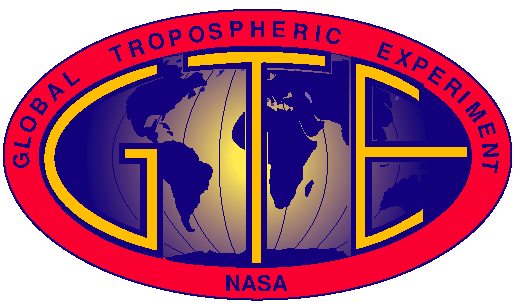|
|||||
|
|||||
PEM-Tropics B Press Conference May 30, 2000 The tropical atmosphere plays a critical role for climate change and for the destruction of environmentally important gases by oxidation. In March-April 1999 NASA conducted a two-aircraft mission, the Pacific Exploratory Mission (PEM) - Tropics (B), to better understand the natural and human factors controlling the abundances of trace gases and aerosol particles over the tropical Pacific. Gases of particular importance for PEM-Tropics (B) were OH, the main atmospheric oxidant, and ozone, a major greenhouse gas which is also the primary precursor of OH. PEM-Tropics (B) involved two aircraft, a DC-8 and a P-3, which flew a total of 40 flights from bases in Hilo (Hawaii), Christmas Island, Fiji, Tahiti, and Easter Island. The aircraft carried extensive payloads to measure atmospheric composition both remotely and locally from 0 up to 12 km altitude. The PEM-Tropics (B) scientific team included groups from NASA research centers, national laboratories, research universities, and small research companies. PEM-Tropics (B) was a sequel to the PEM-Tropics (A) mission, which was conducted in September-October 1996 over the same region. PEM-Tropics (A) flew at the end of the dry season of the southern tropics, when considerable biomass burning is known to take place. A key discovery of PEM-Tropics (A) was that the South Pacific is covered by a blanket of biomass burning pollution transported 10,000 miles or more from agricultural and forest fires in South America and southern Africa. This biomass burning pollution has a profound impact on ozone and aerosols over the South Pacific, with likely implications from climate. PEM-Tropics (B), conducted in the wet season of the southern tropics, observed by contrast an exceedingly clean atmosphere over the South Pacific, arguably the cleanest to be found anywhere on Earth. Over the North Pacific, however, PEM-Tropics (B) observed extensive long-range transport of biomass burning pollution from fires in Indochina. PEM-Tropics (B) was conducted in the dry season of the northern tropics. The measurements of PEM-Tropics (B) thus provided the first evidence for long-range transport of biomass burning pollution in the northern hemisphere, complementing the observations from PEM-Tropics (A) in the southern hemisphere. PEM-Tropics (B) observed a continuous air pollution "river" flowing in the lowest mile of the atmosphere from the North Pacific towards the tropics. This river of pollution carried the outflow of industrial emissions from both Asia and the United States to the western equatorial Pacific in the vicinity of Fiji. There the pollution was pumped to high altitude by thunderstorms and dispersed to the global tropical atmosphere. The results from PEM-Tropics (B) indicate that this "river" could represent a major mechanism for transfer of pollution from northern midlatitudes to the tropics. A landmark success of PEM-Tropics (B) was to provide the first extensive measurements of the OH radical oxidant in the tropical troposphere. These measurements were made with new instruments developed at the Pennsylvania State University and at the National Center for Atmospheric Research. They demonstrated that global model predictions of atmospheric OH levels are by and large correct. These model predictions have played a critical role in environmental policy, notably for the replacement of CFCs by products amenable to oxidation by OH in the troposphere, and their verification represents a critical milestone for our understanding of atmospheric chemistry. Further analysis of the OH measurements from PEM-Tropics (B) will lead to a better ability to predict future changes to the oxidizing power of the atmosphere resulting from population growth and industrialization in the tropics. |







